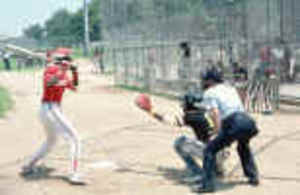Ornette Coleman’s 1959 “The Shape of Jazz to Come” was fittingly named. Far removed from his maddeningly amorphous, “free” works, “Lonely Woman,” the album’s first cut, hints at a sonic insanity that would be fully embraced later in his career. “The Shape of Jazz to Come” was a primer that tested the waters of the avant-garde, and, examined this way, “Lonely Woman” never lets the listener get too comfortable before the test begins. Drummer Billy Higgins opens the track with soft taps on his cymbal, with Charlie Haden improvising in very Eastern-sounding tones on his bass.
Despite Higgins’ galloping on the ride cymbal, the tune has a laid-back feel until Coleman (alto sax) and Don Cherry (cornet) erupt with a real bluesy rift, the cornet playing an octave higher than its counterpart. The brass playing and the rhythm section create a dichotomy in pace throughout the song, the long, drawn-out notes of the horns laid out over the quick strikes of Higgins and the well-placed but meager bass. The only description that makes the most sense from this paradox is “free jazz.” It seems like the first step: Sections playing whatever they want. Then, it would only make sense to further break down the groupings and let musicians have free reign over their parts.
The cornet and sax play mirror-sound-images of one another during most of this tune; one will occasionally cut out to let the other adventure out solo, but even then, the complimentary solos often match each other. Starting at the 1:05 mark, the listener hears a nice build of tension with Higgins venturing out with strikes against his crash cymbal and then switching the rapid flurry of his mallets to his floor tom, as Coleman and Cherry’s instruments dip and dive into lower ranges.
The melody line of “Lonely Woman” mimics the intonation of the human voice, possibly Ornette’s goal to give this song the point of view of the title character, and the call and response wails of the sax and cornet toward the end of the piece only strengthens my feeling of this. For how many times the main riff is repeated in this song, it never feels tiring, which speaks to the depth of the riff itself. This tune can be listened to as a transition piece, a summary of what has come before it and of what has yet to come.
To hear the track visit the link provided (http://www.youtube.com/watch?v=NgTr8Z2ioMk).
To see a live performance clip of Ornette Coleman and “Lonely Woman” visit the link provided (http://www.youtube.com/watch?v=hMWiSbq9ZLA).


